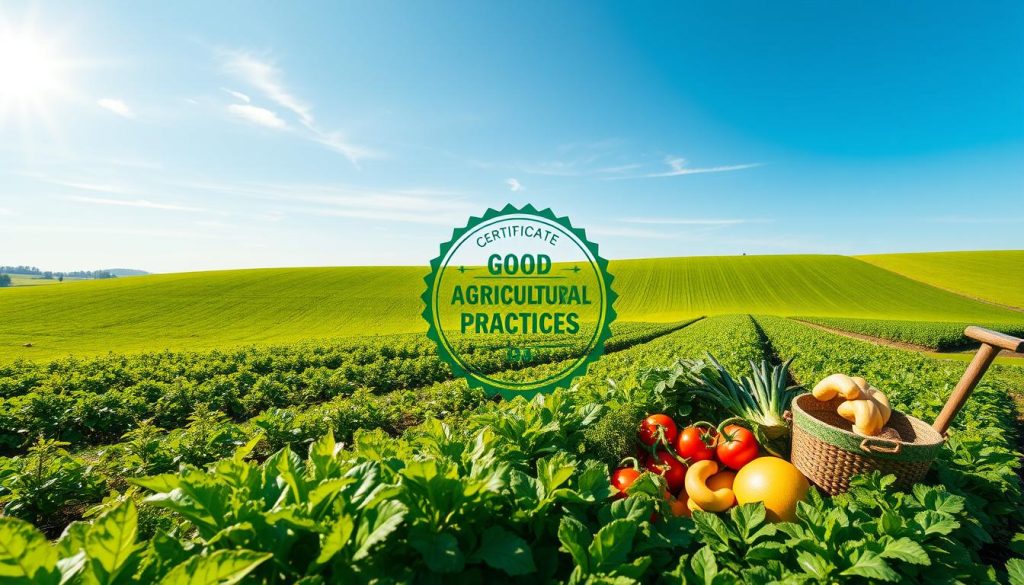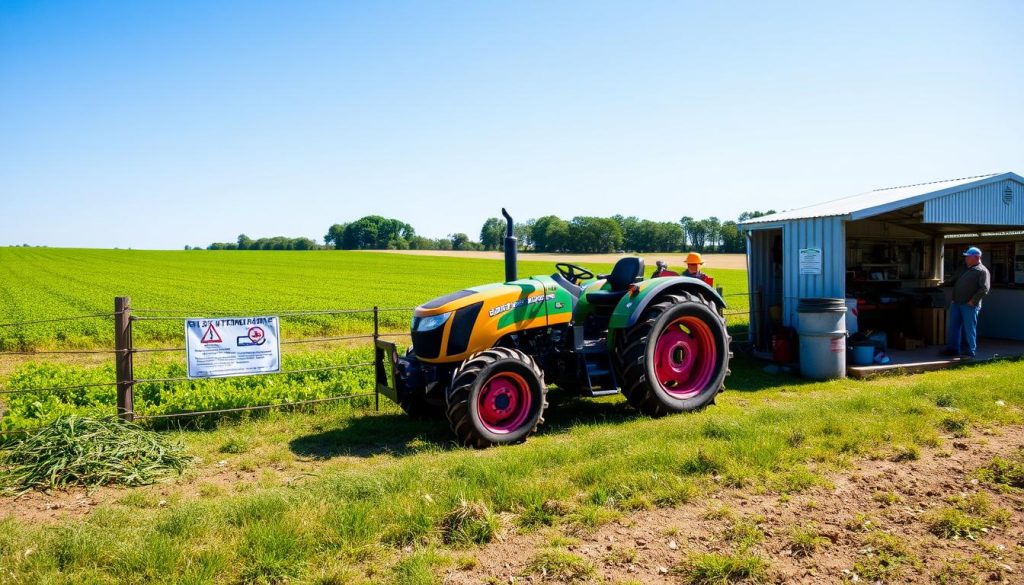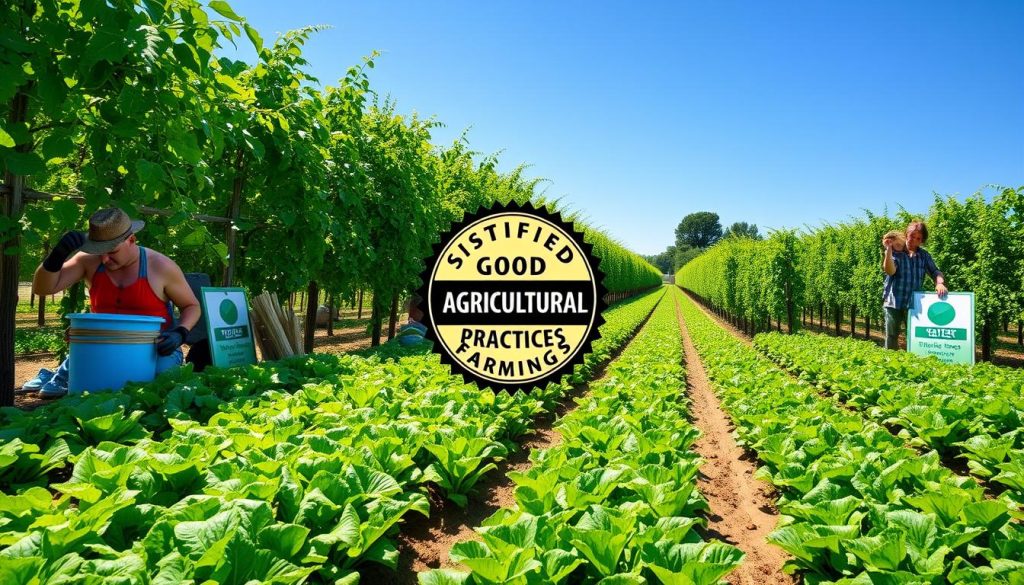GAP (Good Agricultural Practices Certified) Test Guide
The GAP (Good Agricultural Practices Certified) test is key for farmers and producers in the U.S. This guide will help you understand why the GAP certification matters. It covers its main parts and how to get ready for the test. Passing the GAP test shows you’re serious about growing safe, sustainable, and traceable food. This is vital for keeping customers happy and reaching different markets.

Key Takeaways
- The GAP test checks if farming is safe and sustainable. It makes sure farms follow food safety and environmental rules.
- Getting a GAP certification proves you’re dedicated to quality and safety in your farming. It shows your products are trustworthy and safe for people to eat.
- Holding a GAP certification is important for keeping customers’ trust. It also helps you get into more markets.
- The GAP test looks at many areas. These include farm safety, food safety, taking care of the environment, and making sure food can be traced back to its source.
- To prepare for the GAP test, learn about its main points. Then, use these best practices in your farming work.
Understanding GAP (Good Agricultural Practices Certified) Certification
In the agricultural world, keeping farms safe and food safe is key. GAP (Good Agricultural Practices) certification shows a farm’s commitment to safe and responsible farming. It makes sure the food is safe for people to eat and workers are protected.
Importance of Farm Safety and Food Safety Standards
GAP certification shows a farm’s strong focus on farm safety certification and food safety standards. By following these rules, farmers lower risks. They keep their workers safe and protect the environment.
Key Components of GAP Certification
The GAP certification covers important areas, including:
- Traceability protocols to ensure produce traceability and product accountability
- Integrated pest management techniques to promote sustainable farming practices
- Quality assurance programs to maintain food safety standards and produce handling guidelines
- Worker protection guidelines to safeguard worker protection and promote environmental monitoring
- Third-party verification to ensure compliance with agricultural certification and agricultural best practices
By following these standards, farmers can manage their crops well. They ensure food is safe after it’s picked. This shows their dedication to food safety certification and crop inspection.

Preparing for the GAP (Good Agricultural Practices Certified) Test
Farmers and producers need to get ready for the GAP (good agricultural practices certified) certification test. This test checks if they follow food safety, worker protection, and environmental rules. Knowing the test format and what documents are needed is key.
To do well, it’s important to know about farm safety certification, food safety audits, and agricultural compliance. Review the sustainable farming practices, worker protection standards, and environmental stewardship rules. Make sure your farm follows the traceability protocols and integrated pest management practices.
It’s not just about knowing the rules. Showing how you apply quality assurance programs and agricultural certification is also important. Conduct farm audits to find areas to improve. This ensures your food safety standards, produce handling, and worker protection meet the high standards.
By focusing on environmental monitoring, food safety certification, and farm audits, producers can pass the GAP test. This shows their dedication to agricultural best practices, produce traceability, and crop management guidelines. Being well-prepared helps navigate the post-harvest handling, third-party verification, and crop inspection parts of the test. This leads to gap certification and ongoing produce handling guidelines and crop management techniques.

| Key Preparation Steps | Importance |
|---|---|
| Review GAP certification requirements | Ensures understanding of food safety, worker protection, and environmental standards |
| Conduct internal farm audits | Identifies areas for improvement to meet GAP standards |
| Implement best practices for sustainable farming | Demonstrates commitment to environmental stewardship and traceability |
| Familiarize with documentation and record-keeping | Prepares for the verification process during the GAP test |
| Attend training sessions or workshops | Enhances understanding of GAP requirements and best practices |
Conclusion
The GAP (Good Agricultural Practices Certified) test is key for farmers in the United States. It shows they care about farm safety, food safety, environmental stewardship, and sustainable farming practices. This is vital for keeping consumer trust and accessing markets.
By getting this certification, farmers can show they follow important rules. These rules include worker protection standards, integrated pest management, and quality assurance programs. This ensures their products meet food safety standards and agricultural best practices.
The GAP certification also checks for post-harvest handling and crop management techniques. It’s a way to prove farms are safe and follow the rules. This is important for the future of farming in the United States.